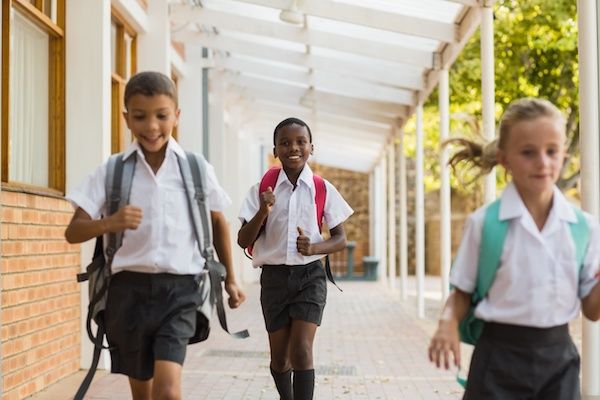National Academies Recommend Prioritizing Opening Schools for Younger Students
A committee of experts convened by the National Academies of Sciences, Engineering, and Medicine recently offered recommendations for local school districts to guide decisions about school reopening during the pandemic.

As parents and school administrators nationwide grapple with whether or how to send children back to classrooms during the coronavirus 2019 (COVID-19) pandemic, the National Academies of Sciences, Engineering, and Medicine weighed in, recommending that districts prioritize reopening for younger students and those with special needs.
The recommendations, highlighted in a viewpoint published in JAMA Network, came from an expert committee convened to offer guidance on reopening and safe operation of schools during the pandemic.
Decisions about opening schools are complicated by disparities both in education and in the pandemic, which has disproportionately affected minority and low-income communities, and decisions should be made with equity in mind, study director Kenne Dibner, PhD, of the National Academies of Sciences, Engineering and Medicine, said during a webinar about the report’s release.
“Inequities in the COVID-19 pandemic and inequities in education are likely to compound one another in the question of reopening schools in ways that potentially have catastrophic consequences for some communities,” Dibner said during the webinar. “What I mean when I say this is the same families that need to send their students to schools because they are essential workers in this economy are also the same families that are hardest hit by this pandemic, and they are also the same families who are sending their students to the least resourced schools. This is a really big problem.”
The committee, which included pediatricians, epidemiologists, public health experts, educators, practitioners, and experts on education policy and school facilities, addressed whether to open buildings for in-person instruction, how to reduce risk and what research is needed to help inform decisions.
“The committee fundamentally understood that the decisions around whether and how to reopen school buildings during the pandemic are fundamentally an assessment of weighing relative risk,” Heidi Schweingruber, PhD, board director, Board on Science Education, National Academies of Sciences, Engineering and Medicine, said during a webinar about the report’s release.
She noted that educators went to “heroic efforts” to ensure that instruction continued remotely when buildings were closed in the spring and that, with more time to prepare, online instruction options will look different in the fall. Still, she said, “There are many things that happen when kids are together in a school with adults that you cannot replicate in distance learning.”
“The thinking that the committee took on was, ‘Who are the students that might have the highest risk if they don’t have any access to in-person instruction, especially over a long period?’” Schweingruber said.
Distance learning is especially challenging for young children through fifth grade and those with special needs, the report said, noting that those students are still learning to regulate their behavior and emotions, maintain attention, and monitor their own learning. It also noted a critical importance of learning to read at grade level by third grade.
“We know that it’s the case for younger children, especially low-income younger children, K-3, that if there are gaps in their learning early on that can have serious long-term consequences over the course of their academic careers that are difficult to ameliorate,” Schweingruber said.
The report noted that schools provide benefits to families and communities beyond education, including meal programs, physical and mental health services, and safe and nurturing places for children to be while caregivers are at work.
The report weighed those benefits against the risks of opening during a pandemic. While current research suggests children are at a lower risk from COVID-19 and suffer milder symptoms, their role in transmitting the disease to adults isn’t fully understood. About 28% of public school teachers are older than 50, placing them among those at highest risk from the disease.
Mitigation strategies recommended to reduce the health risks during the pandemic include ensuring ventilation and air filtration, cleaning surfaces frequently, providing facilities for regular handwashing, and providing space for physical distancing.
“Evidence about relative effectiveness and trade-offs of the different strategies is sorely needed,” Schweingruber said.
Mitigation strategies will be especially difficult to implement in districts with aging school buildings and limited budgets, and federal and state resources will be needed to meet these challenges.
The committee recommended that school districts work in partnership with local or state public health officials in making decisions about opening schools, mitigation strategies for reducing health risks, and future closures. Recommendations include monitoring epidemiological data for their communities and school absenteeism.
School districts also are encouraged to form task forces or other mechanisms for allowing input from local stakeholders to help guide decisions and determine localized values, goals and priorities, review mitigation strategies and establish protocols. The committee also recommended an inclusive process and transparent communication about the risks and benefits of different scenarios to build trust in school leadership.
“This moment is an opportunity to reopen schools in ways that enable them to better serve the students, families, and communities that rely on them,” Dibner, Schweingruber and Dimitri Christakis, MD, MPH, wrote in their viewpoint article.
Whether and how to reopen schools during the pandemic has been a topic of ongoing research. Two recent studies from Australia and the United Kingdom offier possible blueprints for in-person learning during the pandemic.
Anthony Fauci, MD, director of the National Institute of Allergy and Infectious Diseases (NIAID), also has offered advice, saying that the need to reopen schools should be weighed by individual districts based on their circumstances.
